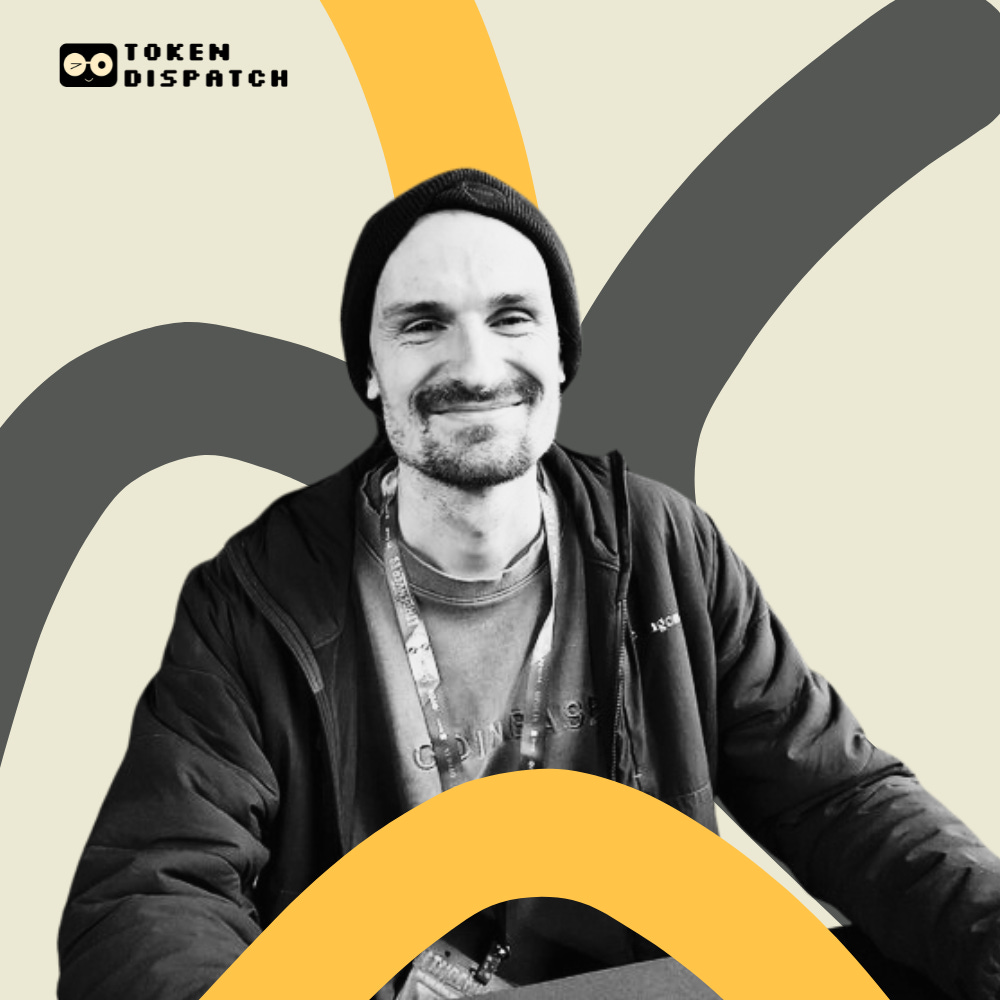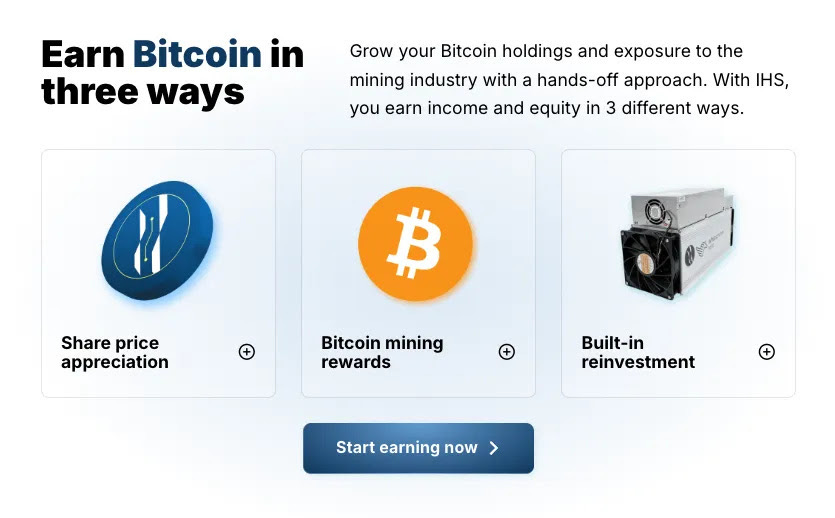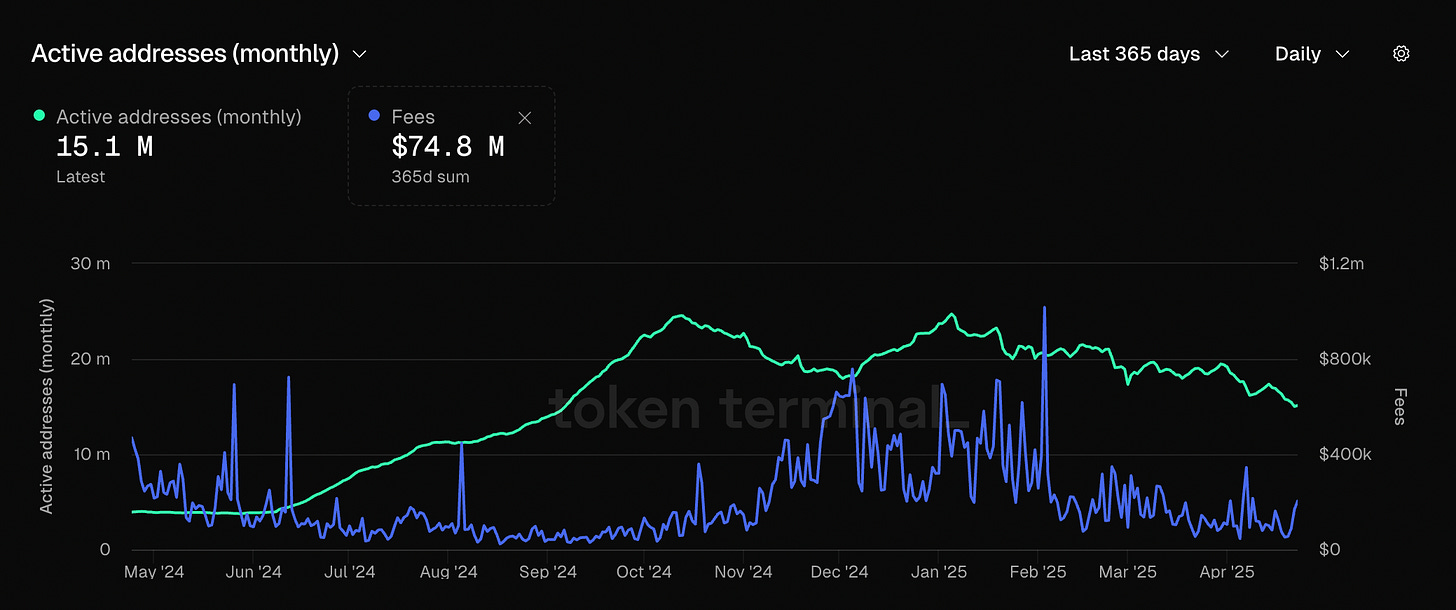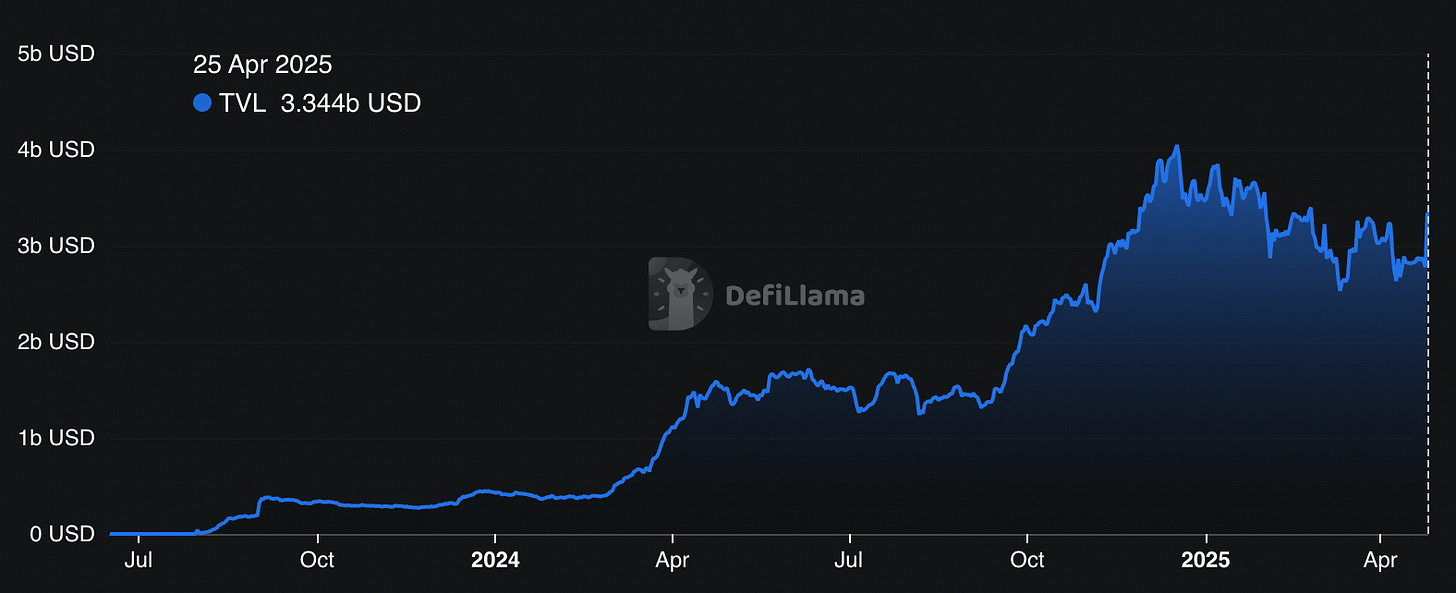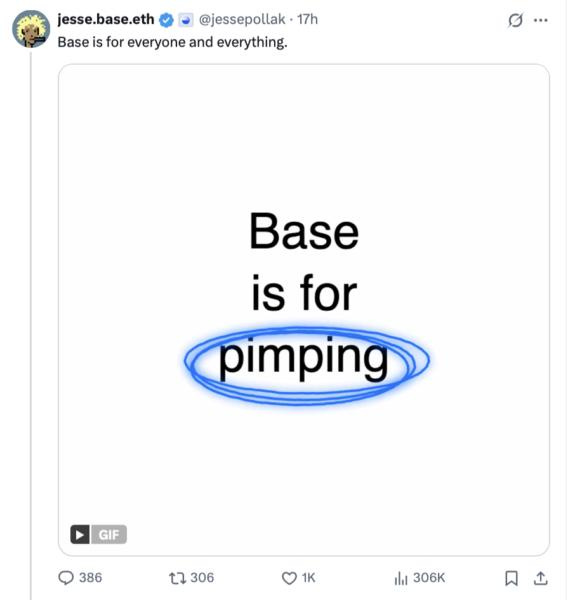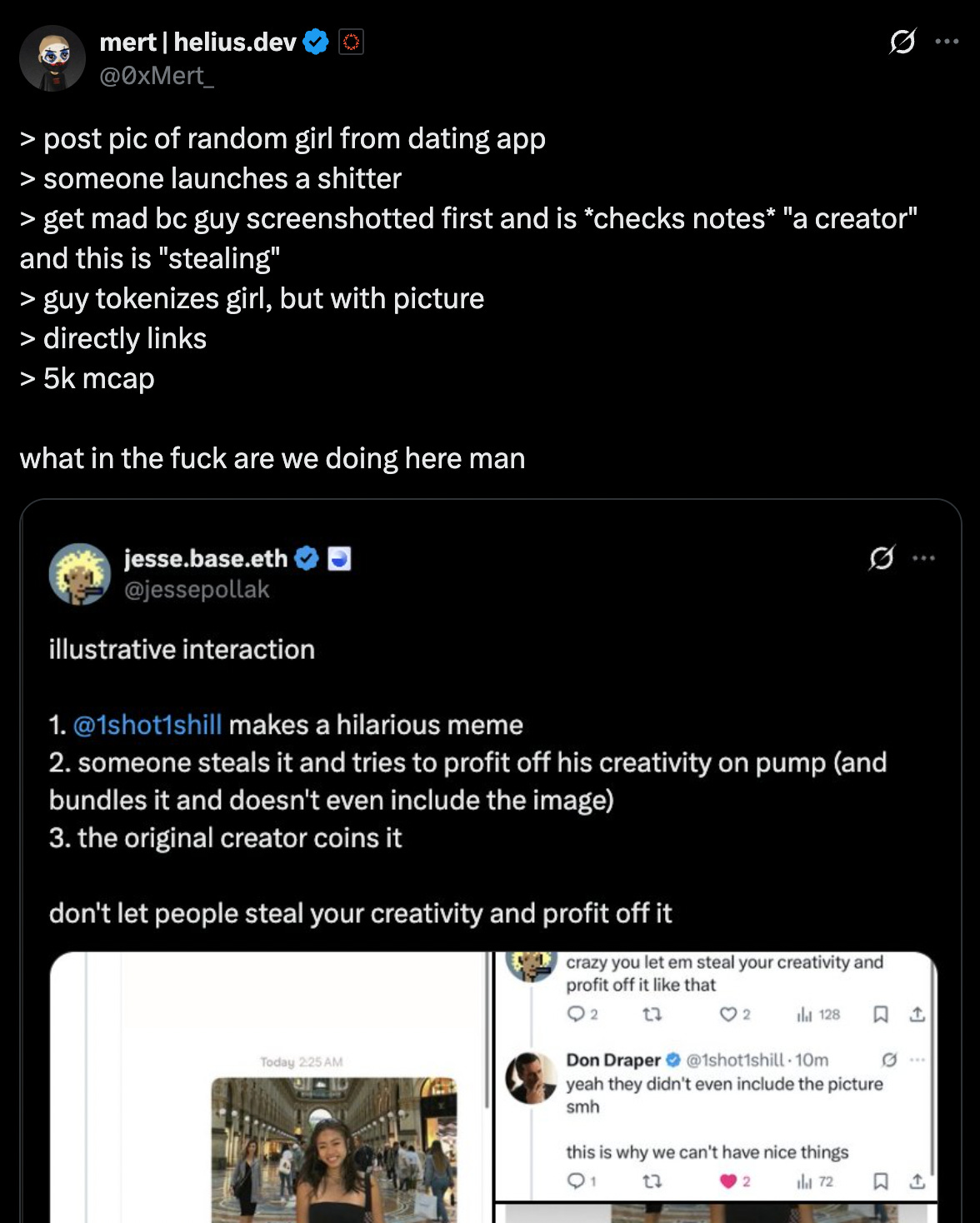TGIF Dispatchers.
The man behind crypto's fastest-growing Layer 2 network apologised last week for sharing artwork containing the phrase "Base is for pimping."
The same man who, a week earlier, inadvertently sparked a memecoin frenzy with a simple tweet that saw $17 million in market cap appear and disappear within hours.
Meet Jesse Pollak, the former college dropout and bagel delivery guy who now leads Coinbase's most ambitious project: Base, an Ethereum Layer 2, that's processing more transactions than Ethereum itself.
In an industry notorious for founders who push boundaries, Pollak stands out – not just for his technical achievements but for the tensions his leadership exposes between crypto's rebellious ethos and its desperate quest for mainstream legitimacy.
How did a Quaker school kid from Washington DC end up at the centre of crypto's latest controversy? And what does his journey reveal about the evolving relationship between cryptocurrency, culture, and commerce?
Buy Once, Earn Daily Bitcoin Forever
Infinity Hash brings the best aspects of cloud and colocation mining into a transparent and reliable system that provides long-term cash flow.
The Quaker Foundation
Jesse Pollak's origin story begins not in the stereotypical Silicon Valley hacker house, but in a Washington DC Quaker school.
There, he was immersed in the SPICES principles – Simplicity, Peace, Integrity, Community, Equality, and Stewardship.
At Sidwell Friends School, Pollak distinguished himself on the soccer field, earning the team MVP award as a senior – an early indicator of his competitive drive. After graduation, he headed west to Pomona College in California to study computer science, but the traditional academic path wouldn't hold him for long.
The entrepreneurial bug bit early.
In 2013, while still at Pomona, Pollak co-founded Clef, a startup aiming to revolutionise online authentication by eliminating passwords. The venture proved compelling enough for him to drop out of college and relocate to the San Francisco Bay Area.
His commitment to the startup was complete. For over five months, Pollak woke up at 6 AM daily to deliver 50 bagels to a local cafe before turning his attention to building his company.
Under his leadership, Clef grew from a team of three co-founders to ten employees and raised $2.2 million in funding. The authentication solution gained traction, eventually powering logins on more than one million websites.
Get 17% discount on our annual plans and access our weekly premium features (Mempool, Game On, News Rollups, HashedIn, Wormhole and Rabbit hole) and subscribers only posts. Also, show us some love on Twitter and Telegram.
The Coinbase Chapter
As Clef wound down in late 2016/early 2017, Pollak faced a career crossroads. He chose to join Coinbase, drawn by his passion for decentralised technology and cryptography, as well as his desire to create secure digital identity solutions.
The move proved fortuitous. Pollak rapidly ascended through Coinbase's ranks, initially leading all consumer-facing engineering from early 2017. During this period, he oversaw the development of cornerstone products like Coinbase, Coinbase Pro, and Coinbase Wallet.
His team expanded dramatically under his leadership, growing from just three engineers to 250 – a testament to both Coinbase's explosive growth during the 2017-2018 bull market and Pollak's capabilities as a technical leader.
By 2022, after several years at Coinbase, Pollak was ready for a new challenge. He considered leaving the company but instead pitched a new idea to CEO Brian Armstrong that would become his most significant contribution to the crypto space: Base, a Layer 2 blockchain solution for Ethereum.
The road to Base wasn't straightforward. Pollak's initial 2021 pitch to transform Coinbase into a decentralised autonomous organisation (DAO) with a $1 billion budget and 60 employees was rejected during the peak of the crypto bull market.
Throughout 2022, Pollak and a small team experimented with various concepts – an advertising marketplace, an app store, an identity app – but none gained traction. The breakthrough came when they realised Coinbase needed a robust software platform to support on-chain activities, leading to the decision to develop an Ethereum L2 solution.
Building Base
By November 2022, Pollak's team had settled on building Base using Optimism's OP Stack, a modular framework for creating scalable L2 blockchains. The project moved with remarkable speed, with an initial version shipped in just three months.
On February 23, 2023, Coinbase officially announced Base, describing it as "an Ethereum Layer 2 (L2) network offering a secure, low-cost, developer-friendly way for anyone, anywhere, to build decentralised apps." The announcement emphasised Base's goal to onboard over one billion users into the crypto economy.
The technical architecture leveraged the OP Stack, bundling multiple transactions off-chain and then submitting summaries with cryptographic proofs to the Ethereum mainnet – significantly reducing transaction costs while maintaining Ethereum's security guarantees.
Base officially launched its mainnet on August 9, 2023, marking a historic moment as the first blockchain launched by a publicly traded company. The platform quickly attracted developers, with approximately 100 decentralised applications ready at launch.
The growth numbers have been impressive. By April 2025, Base has recorded over 15 million active addresses. In October 2024, the network achieved a record 5.6 million daily transactions – more than twice Ethereum's mainnet.
In terms of total value locked (TVL), Base reached the $1 billion milestone in just 226 days after launch, one of the fastest growth rates among Layer 2 solutions. By 2025, this figure has grown to over $3.5 billion, representing a 727.91% increase in less than a year.
These achievements led to Pollak's expanded role at Coinbase. In October 2024, he was appointed to lead Coinbase Wallet and joined Coinbase's executive team, while continuing to lead the Base team – a recognition of his contributions and an opportunity to further influence the company's strategic direction.
Content Coins and Controversy
Despite Base's technical success, recent weeks have seen Pollak at the centre of several controversies that have sparked heated debate within the crypto community.
The first incident occurred when the official Base account posted "Base is for everyone" on Zora, a platform that automatically tokenises content. This created what became known as a "content coin" – a term Pollak and others have used to distinguish these tokens from memecoins.
The token experienced dramatic price volatility, reaching a market capitalisation of $17.1 million before crashing by nearly 90% to $1.9 million within 20 minutes. It later recovered to around $13 million, but not before crypto Twitter erupted with accusations of insider trading and "rug pulls."
Read: Base's 'Content Coin' Chaos 🌪️
Three wallets had purchased large amounts of the token before Base's official announcement, then sold at the peak for a combined profit of around $666,000. These wallets collectively held 47% of the token's supply – raising serious questions about who had advance knowledge of Base's post.
Coinbase distanced itself from the controversy, with a spokesperson emphasising that "Base did not launch a token" and that "Base did not sell this token." The company explained that Zora automatically tokenises content, suggesting this was an unintended consequence rather than a planned token launch.
In a subsequent interview with Blockworks on April 23, Pollak reflected on what he would have done differently with the "Base is for everyone" launch.
"In retrospect, one thing I would have done differently is added more context to the Base handle initial post," he explained. "I had been talking about this for a few weeks on my personal handle, and we included a disclaimer on the Zora post itself, but it wasn't enough. We could have done more here."
Pollak has maintained that his goal is to "experiment in public and lead by example," even if that means facing backlash. He's "hyper-focused on bringing a billion folks onchain," which he believes will require some trial and error.
Before the dust could settle on this first controversy, Pollak found himself apologising for a second incident. On April 18, he reshared digital artwork that featured the phrase "Base is for..." followed by a rotating sequence of words, including controversial terms like "pimping" alongside more neutral ones like "art" and "minting."
The post drew criticism from industry figures who found the term offensive and inappropriate, arguing it harmed crypto's broader reputation by alluding to exploitation.
Pollak quickly issued a public apology: "It was a single phrase among many, but I'll own this was a mistake and apologise." He clarified that while he appreciates provocative art, he recognised the importance of being mindful about the messages he shares.
The controversy deepened further when Pollak promoted a post showing a screenshot of a girl from Hinge being "coined" on Zora – potentially violating both the subject's consent and Hinge's terms of service. Pollak later apologised and deleted the post, acknowledging that this process has required "a learning curve in real time."
He sees content coins as potentially serving three key segments: creators who want to monetise content, collectors engaging for fun, and traders looking to profit from a new market – with the goal of bringing more value onchain for all three groups.
When asked about competition with platforms like Pump.fun on Solana, Pollak struck a conciliatory tone. "I have a lot of respect for the Solana team – they've done a lot to onboard people into crypto, and I'm glad to see that. We're looking to grow the pie, not just compete for the existing pie," he told Blockworks.
Got questions about a hot crypto topic that you want help understanding? Ask your question using the form and our crypto experts may answer it along with your name in the next Thursday’s News Rollups.
The Vision Ahead
Despite these recent controversies, Pollak continues to push an ambitious roadmap for Base. The platform has set targets including securing $100 billion in on-chain assets and onboarding 25 million users by the end of 2025.
Technical improvements in the pipeline include reducing block times to 200ms (from the current 2 seconds) and scaling blockspace to 50 Mgas/s, which would significantly enhance transaction speed and throughput.
The Base team is also working on:
Accelerating decentralisation while increasing network availability
Driving down transaction fees to below $0.01
Making smart wallets the default user experience
Simplifying the on and off-ramp process for users
Bringing more Coinbase products onchain
Improving interoperability within the Optimism Superchain ecosystem
Pollak is also advocating for the "Superchain" concept to interconnect thousands of L2 chains. This vision aims to scale Ethereum globally, with Base as a key contributor to this ecosystem.
Token Dispatch View 🔍
Jesse Pollak's trajectory from bagel delivery to blockchain builder showcases both the promise and perils of the crypto industry's rapid evolution.
Base's growth metrics are undeniably impressive. In less than two years, it has become a major force in Ethereum's Layer 2 ecosystem, processing transaction volumes that rival or exceed the mainnet itself. This technical achievement, coupled with Base's open-source approach and developer-friendly tools, represents a significant contribution to blockchain infrastructure.
However, the recent controversies surrounding "content coins" and provocative marketing reveal the tensions inherent in Coinbase's attempt to straddle two worlds. As a regulated, publicly-traded company, Coinbase seeks mainstream legitimacy and institutional adoption. Yet through Base, it's also trying to tap into crypto's edgier, more experimental culture – a delicate balancing act that occasionally backfires.
The timing of Zora's token launch – coming just days after Pollak's content coin campaign drove a 601% spike in platform activity – raises questions about the relationship between the two entities. While Pollak insists the timing was coincidental, the financial connections between Coinbase and Zora (with Coinbase participating in multiple funding rounds) create an appearance of potential conflicts of interest that merits scrutiny.
Pollak's willingness to "experiment in public" reflects an admirable commitment to innovation, but his recent missteps – from the "Base is for everyone" token chaos to sharing problematic artwork and Hinge screenshots – suggest a need for greater consideration of unintended consequences. When your experiments can move millions of dollars and potentially violate individual privacy, the "move fast and break things" ethos requires more guardrails.
His approach to content coins presents both opportunity and risk. The vision of directly monetising creative work without platform intermediaries is compelling, but the current implementation – where posts spike to multi-million dollar valuations before crashing – resembles speculation more than sustainable creator economics.
The distinction Pollak draws between content coins and memecoins – that the former represent singular pieces of content with no expectations, while the latter aggregate content with high expectations – feels like splitting hairs when both can experience the same volatile price action and potentially leave retail traders holding the bag.
Base's technical roadmap remains promising, and Pollak's vision for interconnected L2 chains could significantly advance Ethereum's scalability. However, the path to mainstream adoption requires not just technical excellence but also responsible leadership and clear ethical boundaries.
As Base continues to grow, Pollak faces the challenge of honouring both his technical ambitions and the Quaker values of his youth. The test of his leadership won't just be in transaction volumes or TVL figures, but in whether he can build a platform that advances crypto's technology while learning from his recent missteps and developing a more thoughtful approach to experimentation that considers impacts beyond just technical metrics.
Token Dispatch is a daily crypto newsletter handpicked and crafted with love by human bots. You can find all about us here 🙌
If you want to reach out to 200,000+ subscriber community of the Token Dispatch, you can explore the partnership opportunities with us.
Disclaimer: This newsletter contains sponsored content and affiliate links. All sponsored content is clearly marked. Opinions expressed by sponsors or in sponsored content are their own and do not necessarily reflect the views of this newsletter or its authors. We may receive compensation from featured products/services. Content is for informational purposes only, not financial advice. Trading crypto involves substantial risk - your capital is at risk. Do your own research.






